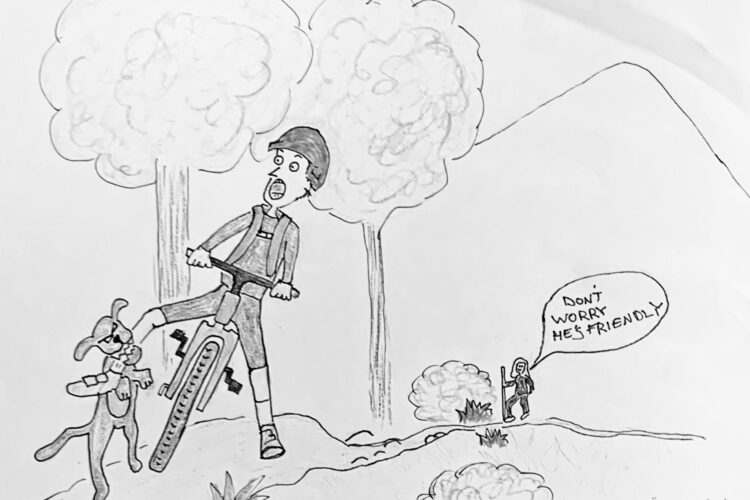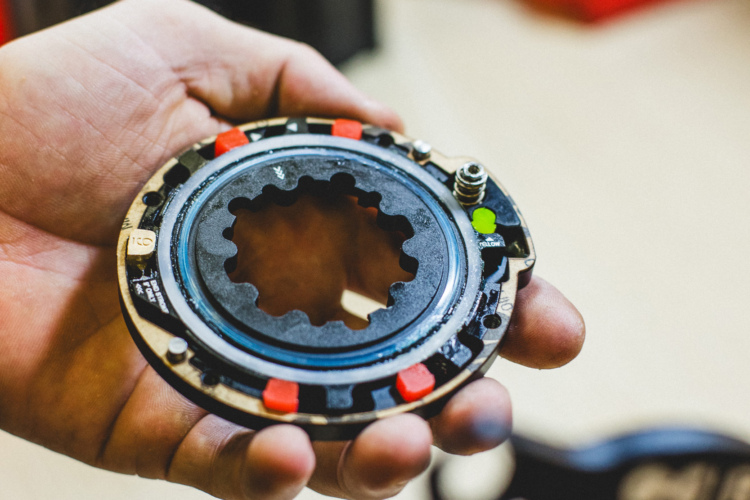
It is impossible, I believe, to find a more enthusiastic trail shredding companion than a trail dog. No matter the weather, the destination, the length of the ride, or the speed, they are always keen. Their enthusiasm is infectious; nothing drags me out of the hole of despair on a long climb better than my crazy dog’s manically ecstatic face bobbing next to me, tongue flapping everywhere, eyes lit with excitement.
[see_also id=’211865′]
My trail dog of choice is a Border Collie; she is perfect for what I want, her endurance is endless, she can and regularly does run all day. However, I pay the price for this level of energy as she is like that all the time. She does not do lie ins and she has never heard of rest days. Luckily, I entirely agree with her and also dislike both, so we match well.
This is the most important factor. Picking a breed of dog that suits all of your lifestyle not just what you want on the trails.
What to Consider
First of all, you need to be honest with yourself about how much time you realistically have to dedicate to this dog. Dog breeds with the most endurance tend to be the ones originally bred to work all day, either herding or as gun dogs. Understandably, if you then try to limit this to half an hour on a leash either side of being shut in all day while you’re at work, this is going to end in problems. Equally, if you live a very active lifestyle, doing regular 10+ mile rides, a Chihuahua probably isn’t going to cut it.

The type of home environment you can provide should also be a consideration. Do you live in a calm and quiet home with just you and maybe a partner? Or do you have a large family, including young, rambunctious children? Some breeds typically cope with a loud family environment much better than others.
Other things to bear in mind are practical considerations such as the size of house and garden you have. Knowing your dog will always lie in the middle of the room, or if you’re really lucky, the doorway, consider how much room for detours do you have. Some dogs will also shed more than others; will you consider this a problem?
The temperament and trainability of the dog is an important point. How experienced, patient, and interested are you in putting time into training? Some dogs are notoriously easier to train than others. Each breed has it’s own characteristics–be honest with yourself regarding what you are able to cope with.

In all likelihood no one breed will tick all the boxes and there are always exceptions, but by putting in prior thought you can decide which areas are most important to you and make an educated decision.
[see_also id=’189731′]
Most Highly Recommended Breeds
1. Border Collie

It’s hard to beat the energy levels of a collie. They are fast, agile, hardy, intelligent, loyal and have great focus on the task at hand. Of course they are also mad as hatters and need a good amount of physical and mental stimulation in order to channel all that energy into positive rather than negative behaviour.
2. Pointer / Vizsla
The German Short Haired Pointer and Vizsla (aka Hungarian Pointer) are athletic, very fast, energetic. and intelligent dogs. There’s a reason this is the Athertons’ choice: the Pointers have a serious turn of speed! They are a large breed known for being boisterous and needing a lot of exercise. Bred to hunt, they need to be trained well to listen rather than follow their nose. The GSP is the larger and more independent of the two. The Vizsla is generally thought to be the more docile family pet.
3. Labrador

Quite possibly the most popular breed in the world, and for good reason: the Labrador strikes a great balance between working dog, playful companion, and docile, tolerant family dog. Their happy-go-lucky temperament and exceptionally high food drive make them easy to train and even easier to love. The breed does have a few problems with hip dysplasia and shoulder problems so if buying from a breeder, check the litter is hip and eye scored. Dogs from a working line tend to have a more athletic build and so are faster with better endurance; those from show lines are chunkier with shorter legs, less built for speed, but also of a calmer disposition.
4. Australian Cattle Dog
Also known as Heelers and very similar to the Kelpie, Australian Cattle Dogs are thought to have descended from crossing Blue Merle Highland Collies and Dingos. They are solid, compact muscular little dogs who are by nature of the job very tough, with incredible endurance and a great tolerance of the heat. Bred to work, they are intelligent, focused, and easy to train, but despite their very purposeful breeding for a job they also make great pets, albeit very energetic ones.
5. Spaniels

These intelligent, busy, happy little dogs are essentially just balls of energy–always on the go, always up for anything, always with a smile on their face. I consider them the Duracell bunny of the dog world. Again bred to work all day, similar to the collie, they are either doing-doing-doing or asleep–there is often no in between. Naturally of a sunny disposition, they are affectionate, eager-to-please dogs who make excellent family pets for an active household.
Final Thoughts

For this article I have picked out a few of the most highly-rated breeds as trail dogs. There are many other breeds out there also suitable. It is worth mentioning that one of the best dogs out there is a mongrel. A mix of the above breeds or crossed with something else, they are often less susceptible to the genetic issues inherent of pure breeds and yet still have all the good traits.
There’s an awful, heart breaking number of perfectly good, problem-free dogs dying for the kind of active, adventure-filled life a trail dog leads, looking for homes in rescue centres. Please adopt, don’t shop, and remember–a dog is for life, not just for summer shredding days!
As the author I am by no means an expert, simply a dog lover. If you are in anyway unsure if your dog can cope with the work or are having issues with the training, speak to a qualified professional trainer or your vet.
[see_also id=’230831′]




















6 Comments
Jul 21, 2017
They also are non-agressive.& great with kids.
Mine is the best of buddies.
Jul 22, 2017
Apr 1, 2018
Jul 17, 2017
Nov 2, 2018
Nov 2, 2018